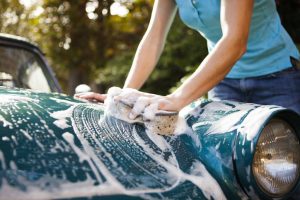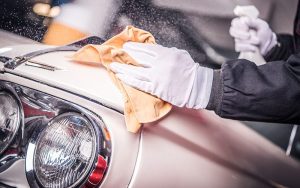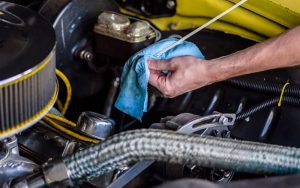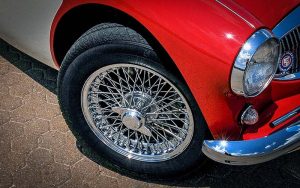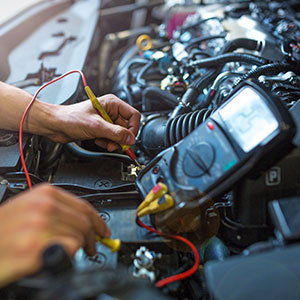Vintage cars hold a special place in the hearts of enthusiasts, and their preservation is essential to maintain their timeless beauty. To keep your vintage car in the best condition, it requires meticulous care and attention. This article delves into the world of vintage car maintenance and provides valuable insights to help you preserve the allure of these classic vehicles.
1. Understanding the Unique Needs of Vintage Cars:
Vintage cars require special care due to their age and unique features. It’s crucial to familiarize yourself with the specific needs of your vintage car model. Study the owner’s manual and consult with experts or fellow enthusiasts to gain a comprehensive understanding of your car’s requirements.
2. Regular Cleaning and Detailing:
Proper cleaning is essential to maintain the exterior and interior of your vintage car. Wash the car regularly using a mild soap and soft cloth or sponge. Avoid using harsh chemicals that may damage the paint or upholstery. After cleaning, apply a protective wax coat to preserve the car’s shine and protect it from the elements.
3. Preservation of Paint and Chrome:
The paint and chrome parts of a vintage car require special attention. Regularly inspect the paint for chips, scratches, or signs of corrosion. Touch up any imperfections promptly to prevent further damage. Apply a high-quality wax or paint sealant to protect the paint from fading or oxidation. For chrome parts, use specialized chrome cleaners and polishes to maintain their luster.
4. Engine Care and Maintenance:
The engine is the heart of a vintage car, and its proper maintenance is vital. Regularly check the oil level and quality, and change it as recommended by the manufacturer. Inspect and replace the filters, spark plugs, and other vital components according to the maintenance schedule. Proper lubrication, tuning, and periodic inspections by a qualified mechanic are crucial to keep the engine running smoothly.
See more: Ignite Your Classic Car’s Potential: Unraveling the Mysteries of Oil Selection
5. Tire and Suspension Maintenance:
The tires and suspension play a significant role in the overall performance and safety of a vintage car. Regularly check the tire pressure and ensure it’s within the manufacturer’s recommended range. Inspect the tires for any signs of wear or damage and replace them when necessary. Additionally, pay attention to the suspension system, including shocks, struts, and bushings, and replace worn-out components to maintain optimal ride quality.
6. Electrical System and Wiring Checks:
Vintage cars often have intricate electrical systems that require careful inspection and maintenance. Check the battery regularly, ensuring it’s properly charged and the terminals are clean. Inspect the wiring for any signs of fraying, damage, or loose connections. Replace faulty wires or connectors to prevent electrical issues that can affect the car’s performance or safety.
7. Storage and Protection:
When not in use, it’s important to store your vintage car properly to prevent damage. Find a clean, dry, and secure storage space, preferably indoors, to protect the car from the elements. Use a breathable car cover to shield it from dust and sunlight. Consider using moisture-absorbing products or a dehumidifier in the storage area to prevent moisture buildup and protect against rust or corrosion.
8. Regular Maintenance Inspections:
Schedule regular maintenance inspections with a qualified mechanic who specializes in vintage cars. These inspections will help identify any potential issues before they become major problems. A professional can provide expert advice on necessary repairs, adjustments, and upgrades to keep your vintage car in optimal condition.
9. Driving and Handling Tips:
When driving your vintage car, follow these tips to ensure a smooth and enjoyable experience:
- Warm up the engine before driving to allow proper lubrication.
- Avoid abrupt acceleration or braking to minimize stress on the engine and other components.
- Be mindful of the car’s limitations, as vintage cars may have different handling characteristics compared to modern vehicles.
- Drive on smooth roads whenever possible to minimize vibrations and shocks to the car’s suspension.
Owning a vintage car is a passion that requires dedication to preservation and maintenance. By understanding the unique needs of vintage cars, regularly cleaning and detailing, taking care of the engine, tires, and electrical system, and storing the car properly, you can keep your vintage car in the best condition. Regular maintenance inspections and safe driving practices further contribute to the longevity and enjoyment of your classic vehicle.
FAQs:
1. How often should I clean my vintage car? Cleaning your vintage car should be done regularly, ideally every two weeks. However, you should adjust the frequency based on usage and environmental conditions.
2. Can I wash my vintage car with a pressure washer? Using a pressure washer can be too harsh for vintage cars and may damage the paint and delicate components. It’s best to use a gentle hand wash method.
3. Are there any specific products I should use to clean my vintage car? When cleaning your vintage car, opt for mild soaps, soft cloths, and non-abrasive cleaning solutions. Avoid harsh chemicals that can harm the paint or upholstery.
4. Should I drive my vintage car in inclement weather? It’s best to avoid driving your vintage car in heavy rain, snow, or other severe weather conditions. Exposure to moisture can lead to rust and other damage.
5. How often should I have my vintage car inspected by a mechanic? Schedule a comprehensive inspection by a vintage car specialist at least once a year. Additionally, have the car checked before long trips or if you notice any unusual sounds or performance issues.
